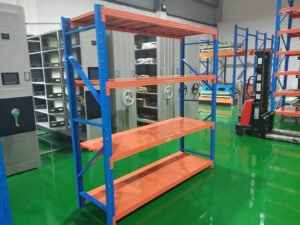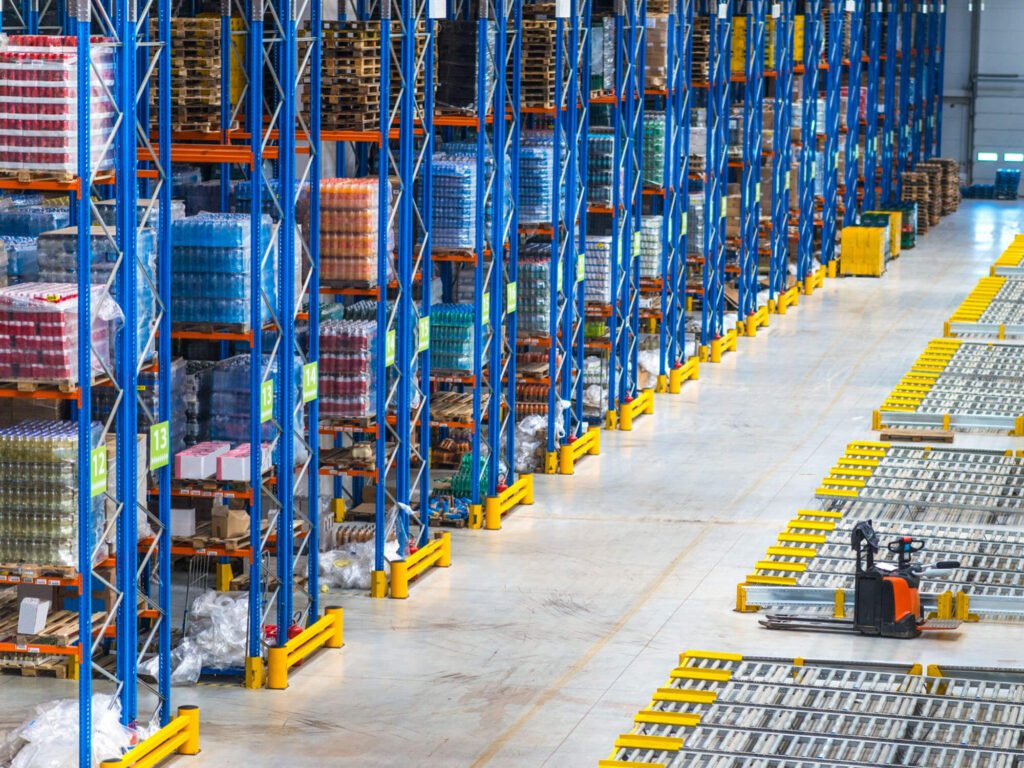There comes a time when every warehouse realizes that they need to manage space more efficiently. This can be due to growing inventory or the need to improve operational efficiency. Warehouses can opt to buy more storage spaces or expand the existing ones, but this leads to significantly more expenses.
However, there might be a more effective solution that can greatly increase storage space while saving costs. Introducing stacking racks. This guide delves into the key benefits, types, and applications of stack racks with insights on choosing the right ones for your warehouse.
What Are Stack Racks?
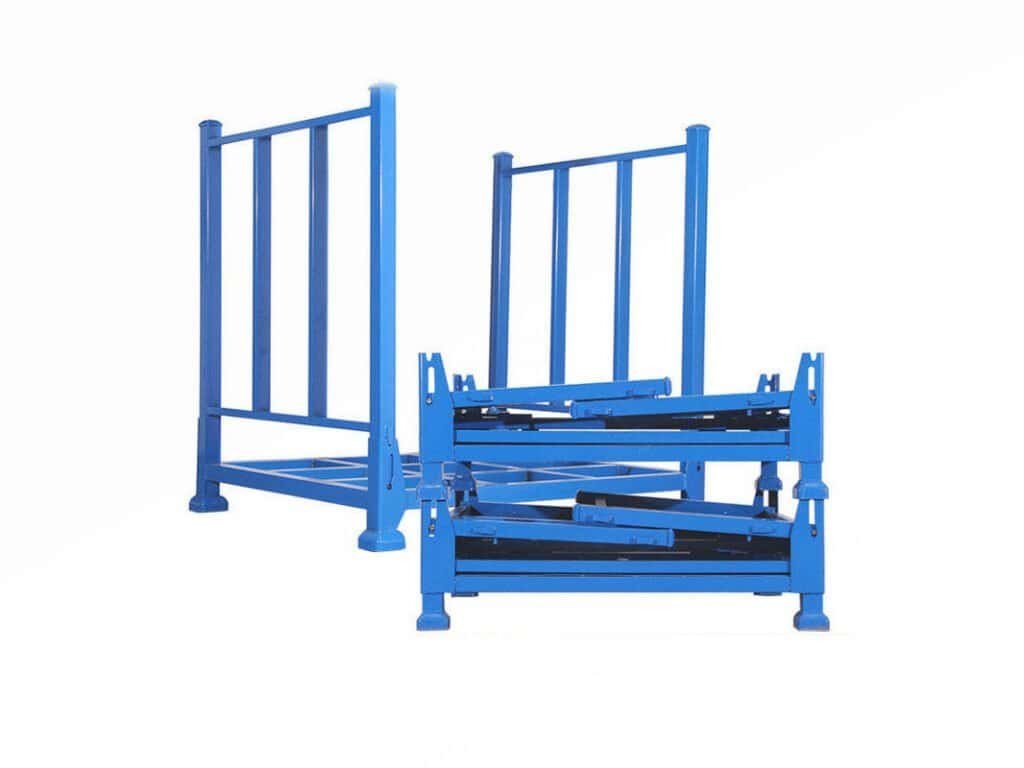
Warehouses can ditch expensive expansions and relocations for stacking racks that provide a more practical and cost-effective solution for managing storage.
Stack racks are simple racking systems for storing and organizing goods in warehouses, retail stores, and industrial settings. What stack racks offer is a structured way for warehouses to organize inventory by utilizing the available vertical space to the fullest. Stack racks differ from traditional pallet racking because all sides are open, allowing for easy access to stored items.
Key Benefits of Stack Racks
Let us look into some of the key benefits that warehouses can get from stack racks:
Flexibility and Mobility
Stack racks introduce a breath of flexibility and mobility to warehouse storage through their portable design. This makes it easy to assemble and disassemble. The mobility stack racks allow warehouses to easily organize and reorganize their storage spaces for better efficiency. And when warehouses require more complex storage arrangements, stack racks can be reconfigured to suit demands.
Space Optimization
Many warehouses today dedicate too much space to storing a limited number of goods. This act not only reduces operational efficiency but also increases storage costs. But by simply integrating stacking racks, warehouses can convert unutilized vertical space into invaluable storage space.
Don’t fall for the temptation of stacking goods on each other, as too much load will easily damage the goods. Instead, use stack racks that provide a sturdy frame for storing goods on different levels. This simple switch alone can greatly optimize space and improve the organizational structure.
Cost-Effectiveness
Adding stack racks for warehouse operations can translate directly to lesser costs. This is due to the enhanced space management and costs saved on expanding or relocation.
Durability
Stack racks are built to meet the heavy demands that warehouses require. The structure is made from strong materials that can easily support heavy loads and withstand harsh warehouse environments. For much larger goods, warehouses can use heavy-duty stack racks specially designed to carry loads of up to 2,000 kg.
Types of Stack Racks
Metal Stack Racks
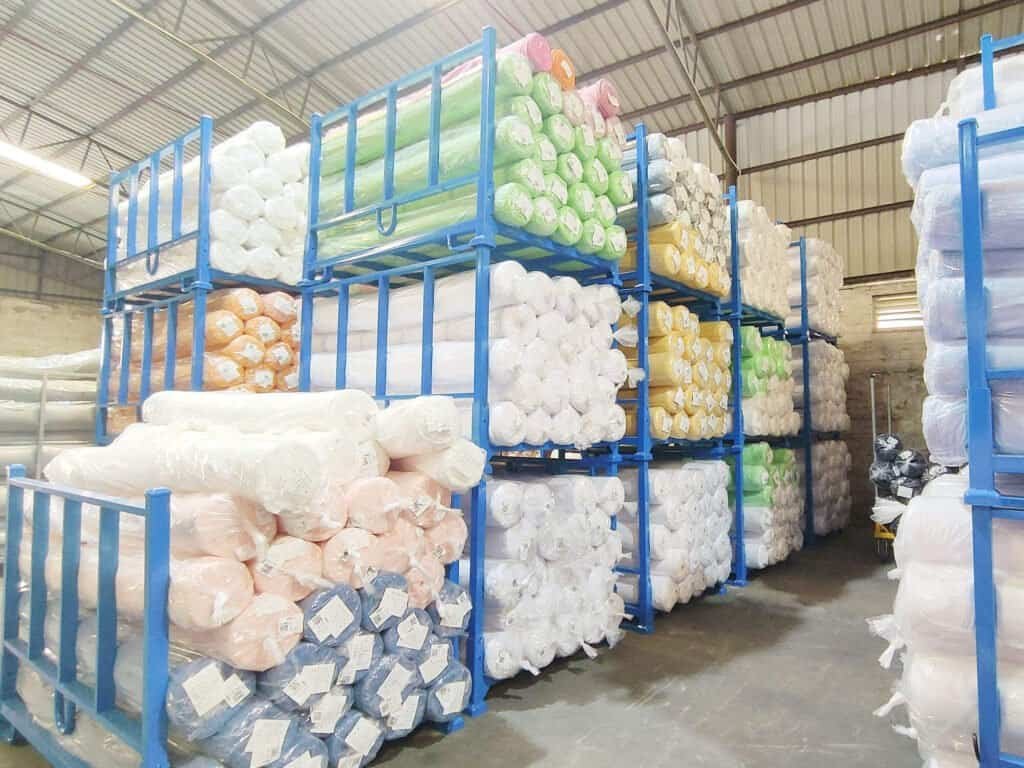
Metal stack racks are the most popular options for warehouses because of their long-term durability and suitability for heavy-duty applications. Compared to wooden stack racks, the metal ones are less prone to damage, stronger, and easier to decouple. Metal stack racks are ideal for warehouses that deal with heavy items such as metal pipes.
Wooden Stack Racks
Wooden stack racks are an alternative that offers enough strength for a variety of warehouses while remaining eco-friendly and affordable. These wooden stack racks are much more suited to lighter loads due to their lesser strength compared to their metal counterparts.
Customizable Stack Racks
For many warehouse operations, customizing their stack racks might be best to get the ideal storage solution they seek. Customizable stack racks can be tailored to meet specific needs in terms of size, material, and load capacity. The customizable stack rack might even be a hybrid containing different materials.
Applications of Stack Racks
In Warehouses
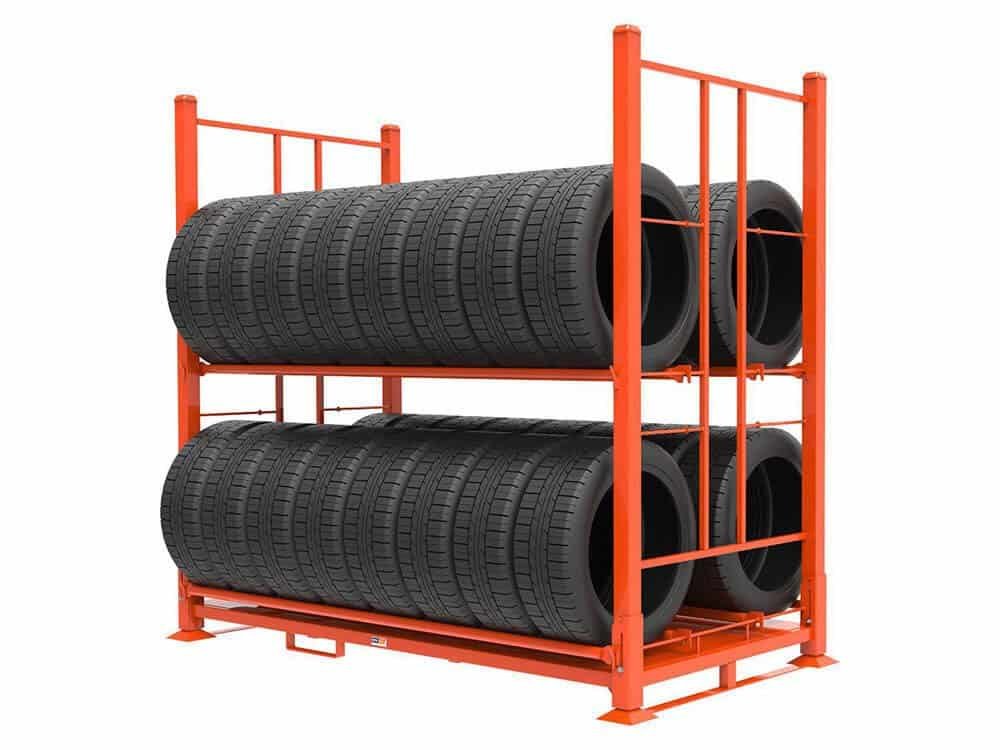
Warehouses are the number one users of stack racks as they have the most demand for storage solutions. Most warehouses will see immediate improvements in inventory management after integrating stacking racks. This space-saving innovation can also help warehouses streamline their operations to reduce downtime and increase productivity.
Retail and Distribution Centers
Stack racks for retail and distribution centers can play a key role in managing stocks especially during peak seasons. In these scenarios, stack racks can be flexible storage equipment for managing overstock or season items without disrupting the main inventory.
Manufacturing and Industrial Settings
Manufacturing companies and industries can use stack racks to store heavy equipment, bulk materials, and finished goods before shipping. Because they are strong and durable, they can handle the weight and volume of these items for long periods.
Temporary Storage Solutions
Need a temporary storage solution? Stack racks are the answer. They can be used for temporary storage needs, such as at construction sites or during relocations. Their mobility and ease of assembly make them a practical choice for short-term applications like on-site inventory management.
How to Choose the Right Stack Rack for Your Warehouse
Assessing Load Capacity
The first thing you should consider when selecting the right stacking rack for your warehouse is how much load it can carry. The load capacity essentially determines how much weight it can hold without breaking or collapsing. Heavy-duty racks are employed for heavy or bulky items. Meanwhile, standard wooden racks can handle lighter goods.
Storage Space and Configuration
The next thing to consider is how much available storage space there is in the warehouse. With this information, you should plan for the most efficient layout that ensures you make the most out of the horizontal and vertical areas available. The good thing is these stack racks can be customized to fit a warehouse’s unique configuration.
Material Selection
The material selection for your stack racks really depends on the weight and type of goods to be stacked. For large or heavy storage requirements, metal racks are the first choice due to their strength.
However, depending on your needs, wooden stack racks can be a more affordable option that provides the required load capacity. Remember also to consider the durability of the material while making a choice.
Future Scalability
The aim of every business is to grow. In the case of a growing business, they must consider their future storage needs and cost-effective ways to achieve them. Stack racks can also save the day here as they are easily scalable and adaptable for changing inventory needs.
Best Practices for Using Stack Racks in Your Warehouse
Regular Inspections

Inspect your stack racks periodically to stay ahead of damaged racks and subtle signs of wear and tear. As time flies, heavy loads and daily use can cause unnoticed damage to the racking system. Regularly checking the racks can prevent accidents and damage to property or lives.
Proper Stacking Techniques
Warehouses must employ proper stacking techniques to prevent accidents and damage to products. The goods shouldn’t be stacked too high as this can lead to instability and falls.
In addition, the goods shouldn’t be overstacked on a single row to prevent damage to individual items. Training staff on safe stacking practices is essential for maintaining a secure warehouse environment.
Load Distribution
Even load distribution is another crucial factor to consider, as overconcentration of load at certain points can collapse the racking system. In essence, it’s not just about how much load you put but also about how the load is spread across the stacking racks.
Safe Handling and Movement
Warehouses should train staff and employees on proper handling and movement of stack racks. Improper treatment and conducting of this equipment and heavy loads can cause serious injuries and damage to products.
Stack Rack Prices: What to Consider

Factors Affecting Stack Rack Prices
The prices of the price of stack racks are influenced by numerous factors, such as:
- Material: Metal stack racks, which are stronger and more durable, are more expensive than wooden ones.
- Size: The larger the required stack racks, the more expensive they will be, regardless of the materials used.
- Load capacity: Stack racks with a higher load capacity are often larger or made with inherently stronger materials, which will cost more.
- Customization: Adding customizations doesn’t necessarily translate to higher costs. However, prepare to increase the budget for unique designs that meet business needs.
Finding Cost-Effective Stack Racks
Balancing price and quality is key when selecting stack racks. Warehouses can save money by purchasing in bulk or exploring refurbished options that provide the same functionality at a lower price.
Moreover, Warehouses can consider installing multiple types of stacking racks, such as metal racks for heavy loads and wooden racks for lighter goods. However, it’s important to prioritize durability and safety to ensure a good return on investment.
Return on Investment (ROI)
Stack racks provide an immediate return on investment by eliminating the need for relocating, opening another storage space, or expanding the current one. This return goes well beyond the short term as operational efficiency is improved while saving costs. The long-term savings gained from better space utilization and reduced need for expansion far outweigh the initial cost of the racks.
Conclusion
Stack racks are an essential tool for warehouses seeking to improve efficiency, maximize space, and manage inventory effectively. Whether you’re dealing with heavy-duty materials or lighter goods, there’s a stack rack solution to fit your needs. By understanding the key benefits, types, and applications of stack racks, businesses can get the most out of their storage systems.That said, sourcing stack racks from a reputable supplier is equally as important to ensure you get the best quality available. Lracking is a globally reputable supplier of warehouse supplies, including racking products. Contact us to get a free quote.

